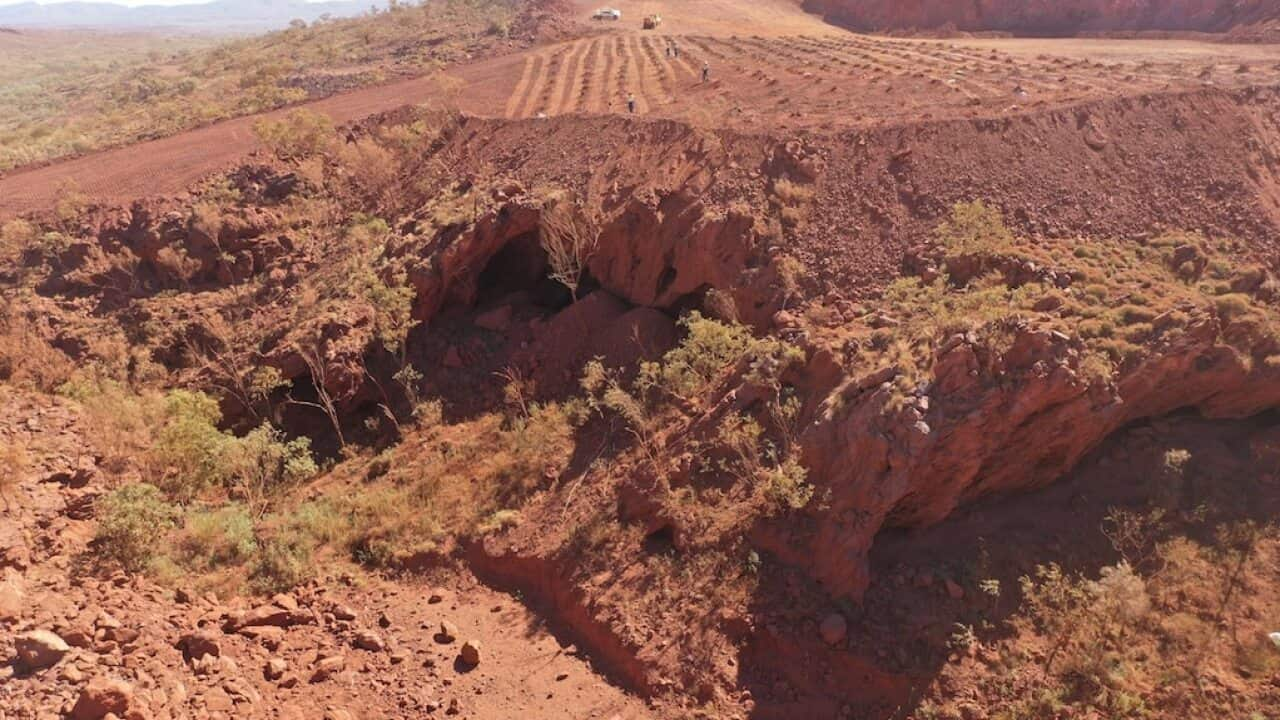The Juukan Gorge inquiry has been told Aboriginal sacred sites were being dug up, wiped out and blown up at a massive Northern Territory lead and zinc mine.
The parliamentary committee inquiry into the destruction of 46,000-year-old caves in Western Australia on Friday heard evidence from traditional owners of Glencore's McArthur River Mine lease.
The mine - about 750km southeast of Darwin - has been dogged by environmental incidents and alleged damage to cultural sites over the past four decades.
Yanyuwa, Garrwa and Gurdanji woman Joy Priest said her late father Leo Finlay, who was a former Northern Land Council deputy chair, fought to protect the land from the mine in the 1970s but was unsuccessful.
"Forty years later, that mining company has still got us like sardines in a tin, and they still got all their interests protected," she said.
"But we are left exposed with our sacred sites unprotected."
Garawa elder and Borroloola Aboriginal leader Jack Green said MRM had destroyed cultural sites important to traditional owners.
"Where they've got the mine site it's right in the middle of six very important sacred sites, they're all connected under a rainbow snake that they've dug in half," he said.
"We're fighting to get the government and the mining company to understand that it's Aboriginal land and very important.
"There's a songline that ties us to the area. We are not going to go away."
Mr Green said Aboriginal people needed to be treated with respect and consulted over future development at the mine.
Gudanji traditional owner for sacred sites within the mine lease Casey Davey said MRM should stop its destruction of the land.
"We want our sacred sites protected and we want them to clean it up," he said.
"Don't treat our country like this."
Native title holders are troubled by the lack of consultation with the expanding mine and its impact on 22 sacred sites and the land.
Glencore wants to increase the size of a nearby waste rock dump from 80 to 140 metres high and move an archaeologically significant stone tool quarry.
It previously made an expansion agreement with six traditional owners, promising each an $85,000 car and monthly food and fuel vouchers.
But the NT Aboriginal Areas Protection Authority refused to issue an Authority Certificate to allow the mine to lawfully carry out the work over consultation concerns.
Glencore appealed to NT Heritage Minister Chansey Paech to override that decision but has since agreed to start talks with the Northern Land Council and traditional owners.
Unlike most mines in northern Australia, McArthur River has never had a comprehensive native title agreement despite diverting a river to expand its operations.
The company now hopes to negotiate an Indigenous Land Usage Agreement for the mine and the Bing Bong loading facility on the Gulf of Carpentaria.
This will involve consultation over sacred sites and cultural heritage protection.
A recent University of NSW report said waste rock at the mine had emitted sulphur dioxide plumes and a leaking tailings dam was seeping metal and acid into the McArthur River system
Researchers also found 22 Indigenous sacred sites were potentially under threat from the mining operations, including the Djirrinmini waterhole, which is believed to be a breeding site for critically endangered sawfish.
Glencore has been contacted for comment.




